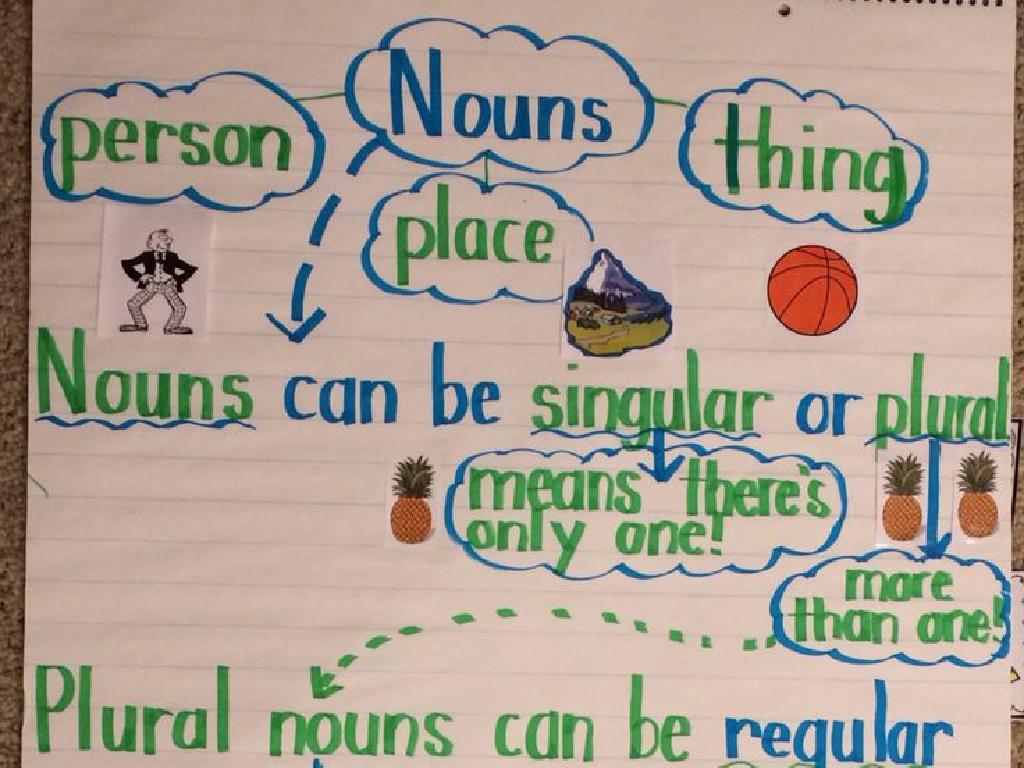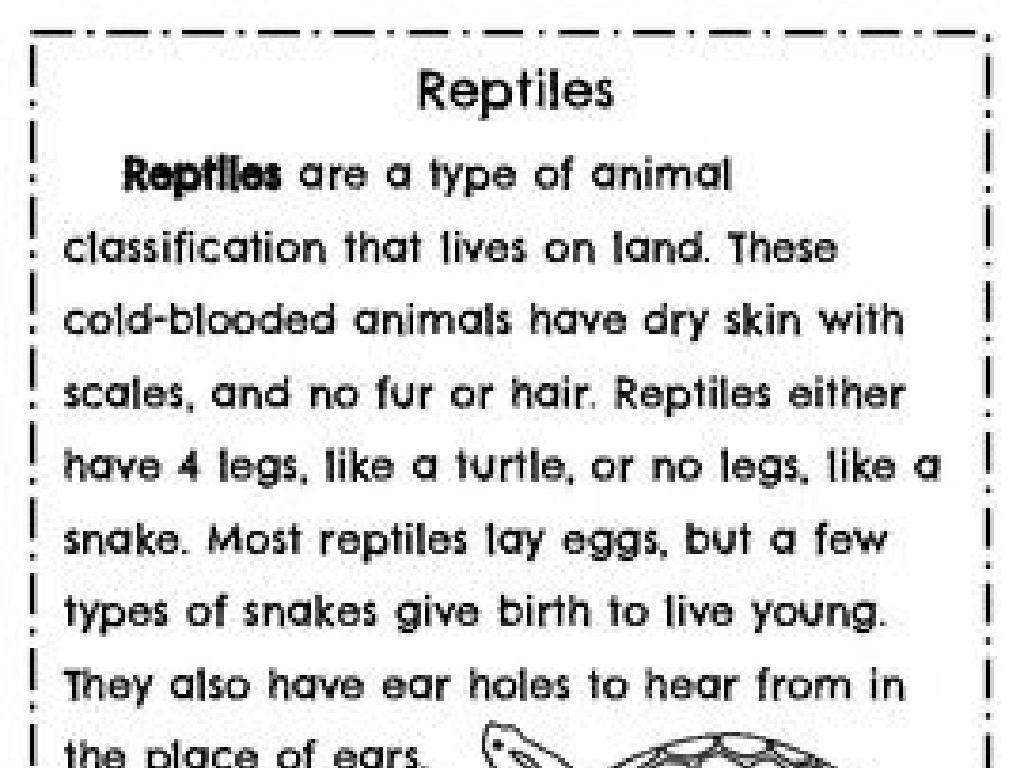Label Parts Of Water Cycle Diagrams
Subject: Science
Grade: Eighth grade
Topic: Water Cycle
Please LOG IN to download the presentation. Access is available to registered users only.
View More Content
Welcome to the Water Cycle
– Explore water’s journey on Earth
– Significance of the water cycle
– The cycle is vital for sustaining ecosystems and human life.
– Components of the water cycle
– Evaporation, condensation, precipitation, and collection.
– Today’s task: Labeling the diagram
– Identify and label each part in your diagrams.
|
This slide introduces the concept of the water cycle and its importance to life on Earth. Begin by discussing how water travels through various stages including evaporation, condensation, precipitation, and collection. Emphasize the water cycle’s role in maintaining ecological balance and supporting all forms of life. The main activity for the lesson involves students labeling the parts of the water cycle on a diagram. This will help them visualize and understand the continuous movement of water within the Earth’s atmosphere. Encourage students to think about how each stage of the cycle affects the environment and why it’s essential for survival. Provide clear instructions for the labeling activity and offer examples to guide them.
Exploring the Water Cycle
– Define the Water Cycle
– The Earth’s natural process of water circulation
– Water’s Continuous Journey
– Water travels through the environment in a cycle
– Four Main Stages: Overview
– Evaporation, Condensation, Precipitation, Collection
– Significance of Each Stage
– Each stage plays a crucial role in the ecosystem
|
This slide introduces the concept of the Water Cycle to the students, explaining it as the continuous movement of water within the Earth and the atmosphere. It is a fundamental concept in environmental science that describes how water evaporates from the surface, condenses into clouds, precipitates back to earth, and collects in bodies of water, only to evaporate again. Highlight the importance of each stage in maintaining ecological balance and supporting life. Encourage students to think about how the water cycle affects weather patterns and climate. Provide examples such as rain forming from clouds (precipitation) and rivers flowing to the ocean (collection).
Stage 1: Evaporation in the Water Cycle
– Water transforms into vapor
– Liquid water becomes gaseous water vapor
– Sun’s heat drives evaporation
– Solar energy heats water, increasing evaporation rate
– Evaporation sources: oceans, lakes, rivers
– Large bodies of water are primary evaporation sites
– Evaporation’s role in the water cycle
|
This slide introduces students to the first stage of the water cycle: Evaporation. It’s crucial to explain that evaporation is the process by which water changes from a liquid to a gas or vapor, and this is primarily caused by the heat from the sun. Emphasize that while evaporation occurs from various sources, it is most significant in large bodies of water like oceans, lakes, and rivers. Discuss how evaporation is a continuous process and sets the stage for condensation, the next phase of the water cycle. Encourage students to think about how the water cycle affects weather and climate. A possible class activity could involve observing evaporation by leaving a wet cloth out in the sun and noting the time it takes to dry.
Stage 2: Condensation in the Water Cycle
– Vapor cools down, forms clouds
– Warm air rises, cools, and loses its capacity to hold water vapor, which condenses into clouds.
– Condensation: water droplets emerge
– Tiny water droplets in the air come together when the air is cooled, leading to condensation.
– Process of cloud formation
– Clouds form as a mass of tiny droplets or ice crystals suspended in the atmosphere.
– Significance of condensation
– Condensation is crucial for cloud formation, precipitation, and the water cycle’s continuation.
|
This slide focuses on the second stage of the water cycle: condensation. It’s essential to explain that as water vapor rises and cools in the atmosphere, it changes from a gas to a liquid, forming clouds. This process is known as condensation. Discuss how the temperature and pressure changes at higher altitudes lead to the formation of water droplets, which we see as clouds. Emphasize the importance of condensation in the water cycle as it leads to precipitation, which replenishes water on Earth’s surface. Use diagrams to illustrate the process visually and encourage students to ask questions about how temperature and altitude affect condensation.
Stage 3: Precipitation in the Water Cycle
– Precipitation: Water’s return to Earth
– Forms of precipitation: Rain, Snow, Sleet, Hail
– Rain: liquid form, Snow: crystal form, Sleet: ice pellets, Hail: frozen raindrops
– Clouds’ role in precipitation
– Clouds gather water droplets, which fall as precipitation when heavy enough
– Precipitation’s impact on the ecosystem
|
This slide focuses on the third stage of the water cycle: Precipitation. Precipitation occurs when water in various forms falls back to Earth from clouds. The different forms include rain, snow, sleet, and hail, each with unique characteristics and conditions for formation. Emphasize the role of clouds in gathering water droplets or ice crystals until they are heavy enough to fall due to gravity. Discuss how precipitation is essential for replenishing Earth’s freshwater sources and is a critical component of the water cycle that affects all ecosystems. Encourage students to think about how different forms of precipitation impact their environment and daily life.
Stage 4: Collection in the Water Cycle
– Water collects on Earth’s surface
– Gravity’s role in water collection
– Gravity pulls water down to lowest points
– Formation of lakes and oceans
– Bodies of water form where water accumulates
– Groundwater as part of the collection
– Some water seeps into the ground, replenishing aquifers
|
This slide focuses on the collection stage of the water cycle, where water gathers in large bodies such as lakes and oceans, as well as underground in aquifers. Emphasize the importance of gravity in directing the flow of water to the lowest points, leading to the formation of various water bodies. Discuss how groundwater is an essential part of the collection process, as it feeds into wells and provides a significant portion of our drinking water. Encourage students to think about local examples of water collection and consider the impact of this stage on the environment and human activities.
Labeling the Water Cycle Diagram
– Identify water cycle parts
– Recognize elements like clouds, bodies of water
– Use correct terminology
– Terms: Evaporation, Condensation, Precipation, Collection
– Label evaporation process
– Where water turns to vapor
– Explain precipitation & collection
– How water returns to Earth and gathers
|
This slide aims to help students understand the water cycle by identifying and labeling each part on a diagram. Students should be familiar with the terms evaporation, condensation, precipitation, and collection. Evaporation is the process where water changes from liquid to gas. Condensation is when water vapor cools and changes back to liquid, forming clouds. Precipitation occurs when water falls from clouds as rain, snow, sleet, or hail. Collection refers to water gathering in large bodies like oceans, rivers, and lakes. Encourage students to draw arrows on their diagrams to indicate the direction of the cycle. This exercise will reinforce their understanding of the continuous movement of water on, above, and below the surface of the Earth.
Interactive Water Cycle Diagram Activity
– Divide into groups for labeling
– Discuss each water cycle stage
– Talk about evaporation, condensation, precipitation, collection
– Label your diagram together
– Present your diagram to class
– Explain your understanding of each part
|
This interactive class activity is designed to foster collaboration and deepen students’ understanding of the water cycle. Begin by dividing the class into small groups and provide each group with a blank water cycle diagram. Students should discuss each stage of the water cycle within their groups, ensuring they understand processes like evaporation, condensation, precipitation, and collection. Once the discussion is complete, each group will label their diagram, identifying each part of the water cycle. To conclude the activity, each group will present their labeled diagram to the class, explaining the significance of each stage. As a teacher, circulate among the groups to facilitate discussions, provide guidance, and ensure that each student is engaged. Possible variations of the activity could include using different case studies, such as the water cycle in a rainforest versus a desert, or having students create a 3D model of the water cycle.
Water Cycle Review & Q&A
– Recap water cycle stages
– Evaporation, condensation, precipitation, collection
– Open floor for questions
– Address water cycle confusions
– Clarify misunderstandings about each stage
– Reinforce learning with examples
– Use diagrams and real-life scenarios
|
This slide aims to consolidate the students’ knowledge of the water cycle by reviewing its stages: evaporation, condensation, precipitation, and collection. Encourage students to ask questions they may have about the water cycle, providing a safe space for inquiry. Address any common confusions, such as the difference between evaporation and condensation or the role of precipitation in the cycle. Use diagrams to visually reinforce the concepts and provide real-life examples, such as rain formation or the process of water collection in lakes and oceans, to help students better understand and remember the stages of the water cycle. This interactive session will help ensure that students have a solid grasp of the topic before moving on.
Homework: Illustrating the Water Cycle
– Draw the water cycle diagram
– Label each part of the cycle
Include evaporation, condensation, precipitation, and collection
– Write a paragraph on its importance
Discuss how the cycle supports life and maintains Earth’s climate
– Share your work in the next class
|
This homework assignment is designed to reinforce students’ understanding of the water cycle by having them visually represent and label its different stages. Encourage creativity but also accuracy in their diagrams. The short paragraph should reflect their comprehension of how the water cycle is crucial for sustaining life on Earth, regulating climate, and maintaining the hydrosphere. In the next class, students will have the opportunity to present their diagrams and share insights, fostering a collaborative learning environment. Provide examples of labels and a brief explanation of each stage to guide them.






